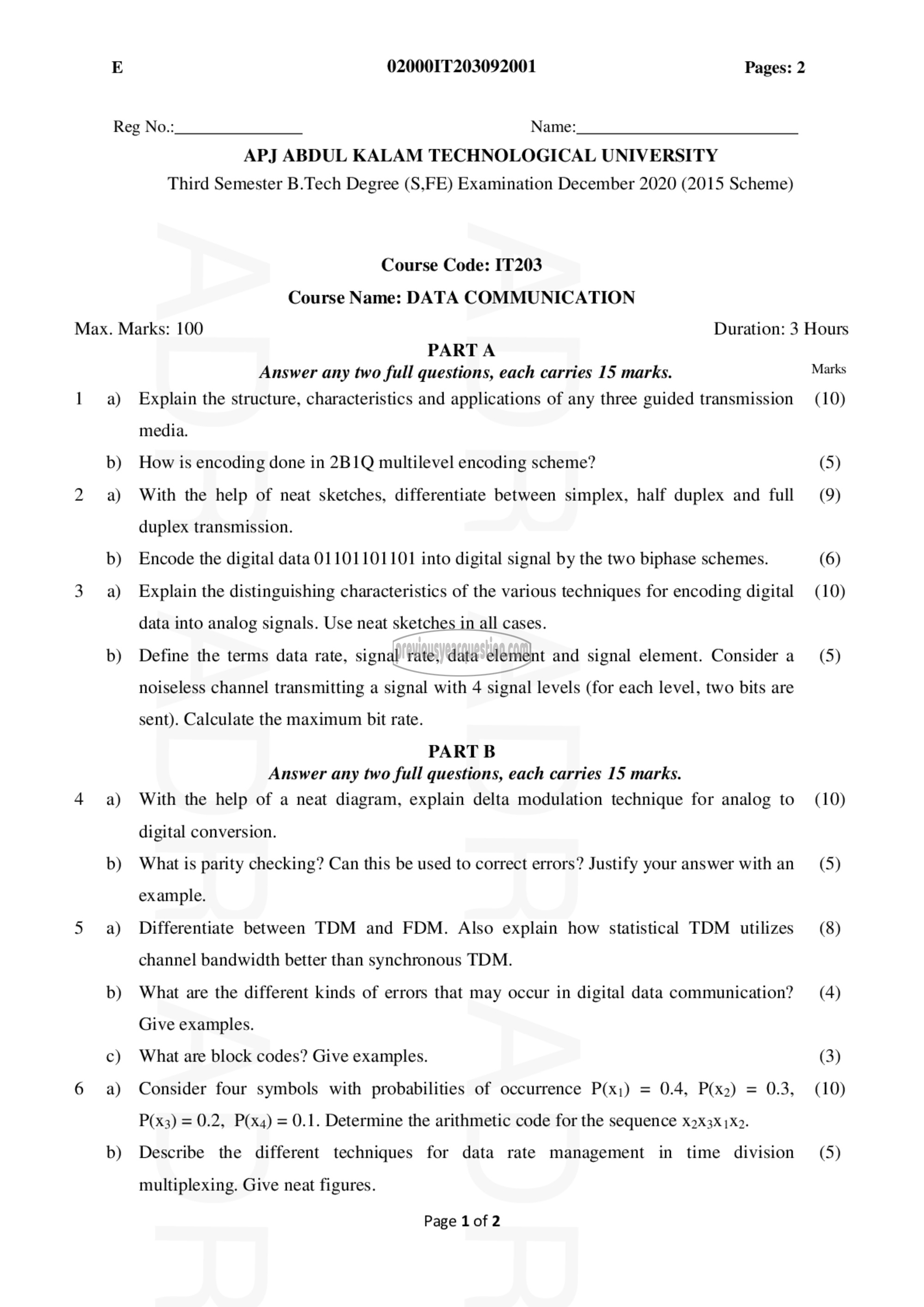APJ ABDUL KALAM TECHNOLOGICAL UNIVERSITY Previous Years Question Paper & Answer
Semester : SEMESTER 3
Subject : Data Communication
Year : 2020
Term : DECEMBER
Branch : INFORMATION TECHNOLOGY
Scheme : 2015 Full Time
Course Code : IT 203
Page:1
E 020001T203092001 Pages: 2
Reg No.: Name:
APJ ABDUL KALAM TECHNOLOGICAL UNIVERSITY
Third Semester B.Tech Degree (S,FE) Examination December 2020 (2015 Scheme)
Course Code: IT203
Course Name: DATA COMMUNICATION
Max. Marks: 100 Duration: 3 Hours
PARTA
Answer any two full questions, each carries 15 marks. Marks
1 a) Explain the structure, characteristics and applications of any three guided transmission (10)
media.
b) How is encoding done in 2B1Q multilevel encoding scheme? (5)
2 a) With the help of neat sketches, differentiate between simplex, half duplex and full (9)
duplex transmission.
b) Encode the digital data 01101101101 into digital signal by the two biphase schemes. (6)
3 9) Explain the distinguishing characteristics of the various techniques for encoding digital (10)
data into analog signals. Use neat sketches in all cases.
b) Define the terms data rate, signal rate, data element and signal element. Consider 2 (5)
noiseless channel transmitting a signal with 4 signal levels (for each level, two bits are
sent). Calculate the maximum bit rate.
PART B
Answer any two full questions, each carries 15 marks.
4 a) With the help of a neat diagram, explain delta modulation technique for analog to (10)
digital conversion.
b) What is parity checking? Can this be used to correct errors? Justify your answer with an (5)
example.
5 9) Differentiate between TDM and FDM. Also explain how statistical TDM utilizes (8)
channel bandwidth better than synchronous TDM.
b) What are the different kinds of errors that may occur in digital data communication? (4)
Give examples.
c) What are block codes? Give examples. (3)
6 a) Consider four symbols with probabilities of occurrence 100) = 0.4, P(x2) = 0.3, (10)
P(x3) = 0.2, P(x4) = 0.1. Determine the arithmetic code for the sequence x2x3x 1X2.
b) Describe the different techniques for data rate management in time division (5)
multiplexing. Give neat figures.
Page 1 of 2
